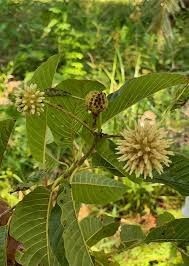Kratom Benefits
- Dave

- Jul 17
- 3 min read
Updated: Jul 17
Botanical Name
Mitragyna speciosa
Family
Rubiaceae (Coffee family)
Common Names
Kratom, Ketum, Biak-biak, Ithang, Thom
Parts Used
Leaves
Native To
Southeast Asia – particularly Thailand, Indonesia (notably Borneo and Sumatra), Malaysia, and Papua New Guinea
Harvesting Guidelines
Kratom leaves are harvested when mature, and potency varies depending on the age of the leaf and vein color. After harvesting, leaves are typically sun-dried or fermented. Red, green, and white vein kratom are processed differently to preserve their unique alkaloid profiles. Sustainable sourcing is essential due to rising global demand and ecological concerns.
Introduction - kratom Benefits
Kratom (Mitragyna speciosa) is a tropical tree native to Southeast Asia, traditionally used for its stimulant, pain-relieving, and mood-enhancing properties. It has been an integral part of traditional herbal practices in Thailand and Indonesia, often used by laborers to fight fatigue or by healers for its analgesic and calming effects.
The leaves contain alkaloids such as mitragynine and 7-hydroxymitragynine, which interact with opioid receptors and other neurological pathways. The effects of kratom vary based on dosage and vein type—white, green, or red.
Vein Types and Their Effects
White Vein Kratom
Effects: Stimulating, energizing, mood-boosting
Best for: Focus, productivity, mild euphoria
Typical Use: Morning or early day use; often used as a coffee alternative
Energetics: Warming, slightly bitter
Green Vein Kratom
Effects: Balanced—mild stimulation with pain relief and mood support
Best for: Mild energy with calm clarity, social ease, and emotional balance
Typical Use: Anytime during the day
Energetics: Neutral, mildly bitter
Red Vein Kratom
Effects: Sedative, pain-relieving, relaxing
Best for: Evening use, pain relief, anxiety, and sleep support
Typical Use: Calming the nervous system, easing physical discomfort
Energetics: Cooling, bitter, grounding
Shop our Kratom, click on image:
Traditional and Indigenous Use
In rural Southeast Asia, kratom has been used traditionally as:
A stimulant for field workers
A folk remedy for coughs, diarrhea, infections, and wounds
A pain-reliever and sedative in herbal medicine
A social beverage, brewed into tea or chewed for focus and endurance
Leaves were often chewed fresh, or brewed into a decoction. The choice of vein color was less emphasized traditionally than in modern herbalism.
Modern Uses
Kratom is now widely used in the West as a natural alternative for pain relief, mood support, and focus. Depending on the strain:
White kratom is used for alertness and motivation
Green kratom provides gentle energy with emotional stability
Red kratom is favored for relaxation, tension relief, and sleep
It is commonly available in powder, capsule, tea, and extract forms.
Scientific Studies
Studies show that kratom’s active alkaloids—especially mitragynine and 7-hydroxymitragynine—bind to mu-opioid receptors, contributing to its pain-relieving and sedative properties, though with a different pharmacological profile than traditional opioids.
Research also suggests possible effects on serotonin and dopamine pathways, aligning with user reports of mood enhancement.
Ongoing studies are evaluating kratom’s potential benefits and risks, especially related to dependence and long-term use.
Adult Dosage Guidelines (approximate, varies by individual and product)
White Vein: 1–3 grams for stimulation; 3–5 grams for moderate effects
Green Vein: 2–4 grams for balanced effects
Red Vein: 2–5 grams for relaxation and pain support
Start low and adjust. Effects vary based on body weight, tolerance, and quality.
Safety and Contraindications
Avoid combining kratom with alcohol, sedatives, opioids, or other psychoactives
May cause dependence or withdrawal with prolonged high-dose use
Not recommended during pregnancy or breastfeeding
Can cause nausea, constipation, dizziness, or sleep disturbances
Consult a healthcare provider before use, especially if you have liver, kidney, or mental health conditions
Note: Kratom is restricted or regulated in some countries. Always check local laws.
Actions
Analgesic
Stimulant or Sedative (strain-dependent)
Anxiolytic
Mood Enhancer
Nervine
Adaptogenic-like properties
Energetics: Varies by strain — Warming (white), Neutral (green), Cooling (red)
References
Kruegel, A.C., & Grundmann, O. (2018). The medicinal chemistry and neuropharmacology of kratom: A preliminary discussion of a promising plant. Frontiers in Pharmacology.
Prozialeck, W.C. et al. (2019). Pharmacology of kratom: An emerging botanical agent with stimulant, analgesic, and opioid-like effects. Journal of the American Osteopathic Association.
van Wyk, B.E. & Wink, M. (2004). Medicinal Plants of the World. Briza Publications.
kratom benefits
tags:
Herbal medicine course
herbal school
wildpluk cursus
kruiden opleiding
geneeskrachtige planten
herborist
become a herbalist









